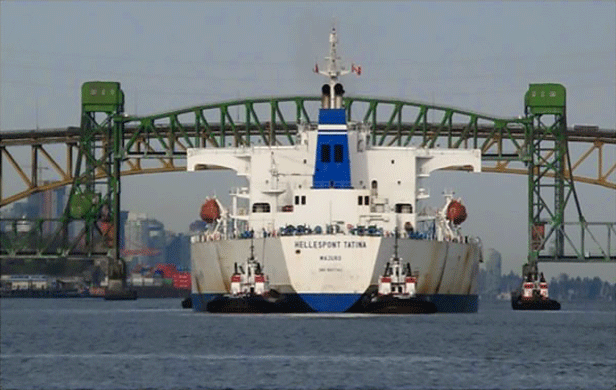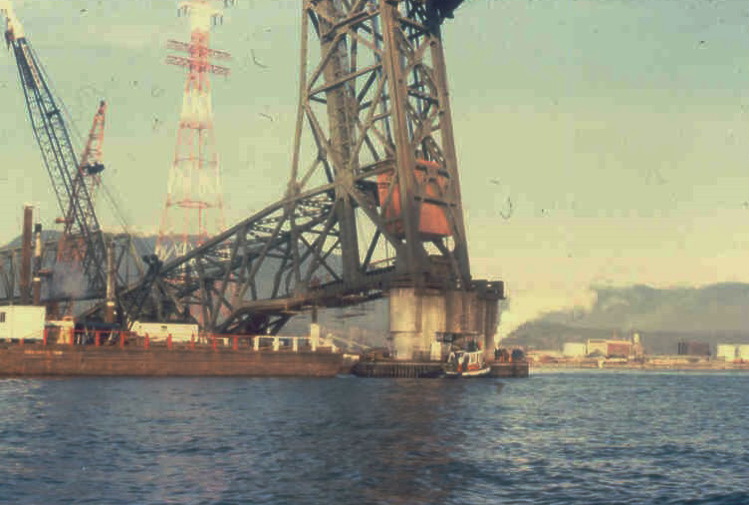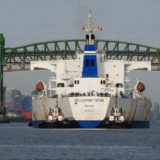
The following is an op-ed by Brian Gunn of the group Concerned Professional Engineers.
Kinder Morgan’s proposed project to increase their transport of Diluted Bitumen from the Eastern Burrard Inlet to the Pacific Ocean offer risks that are many times higher than those accepted for other major infrastructure projects.
As Concerned Professional Engineers (CPE) we feel this is not acceptable. We believe that a proper analysis of risk needs to be made to ascertain whether risks proposed by Kinder Morgan are acceptable and anything less than that is gross negligence on the part of decision makers.
Kinder Morgan predicts 10% risk of major spill
First, what is risk? The dictionary defines it as a situation involving exposure to danger or exposing someone or something valued to danger, harm or the possibility of financial loss. When it comes to building infrastructure like homes, bridges, buildings and highways, various levels of government have established building codes. These are set parameters for how structures must be built so they meet a tolerable risk.
Kinder Morgan predicts a 10 percent risk of a major oil spill, greater than 8,250 cubic meters during the 50 year operating life of the project. They have not made available the computational tools they used to make that risk analysis. As well, the Port Authority of Vancouver refused a recommendation to clear the Vancouver harbour when the oil tankers would be moving through it. On top of this, the risks and consequences of a tanker hitting the Second Narrows Bridges have not been evaluated, despite our requests to the National Energy Board (NEB). Together these variables increase the risk of the project.
Even accepting Kinder Morgan’s computer generated risk assessment, the Trans Mountain Expansion poses a far higher risk than what is acceptable for buildings and bridges.
Double standard
Building codes demand that the risk of an earthquake occurring, causing probable collapse of a structure, be no more than two percent over a 50 year period. Kinder Morgan’s numbers are five times higher (10 percent over a 50 period). In other words, the acceptable risk for an oil spill is not up to the same standard as it is for earthquakes.

New bridges like the Port Mann bridge must meet the Canadian Bridge code guidelines that the probability of collapse be no more than 0.5 percent over a 50 year operating life. This is in recognition of the fact that if a ship collides with a bridge it could cause catastrophic damage to the bridge or even collapse.
Historically, there have been a number of collisions with the railway bridge at the Second Narrows, when hit by vessels of a much smaller scale (weight, height and width) than that of an Aframax tanker. In two cases, the bridge has been completely knocked out of service and had to be rebuilt. Damage to the Second Narrows Highway bridge can result in economic catastrophe because it is a main artery of transportation in Vancouver.
Is it acceptable to risk collision with any bridges in the Burrard Inlet? Is the consequence of an oil spill in the city of Vancouver, a place seen by the world as both green and vibrant, acceptable? Our answer is ‘no’.
Brian Gunn
Spokesperson for CPE


No matter what the risk assessment percentage is it’s too high. The people of BC would like to keep our coastlines beautiful, not covered in drill bit!
KMC made no such “10%” prediction and the CPE have admitted that to me in writing. KMC’s experts gave some predictions in terms of incidents per x years CPE’s guy used some math technique to convert it to % in 50 years. Is it correct – who knows.
I don’t have the most recent copy of the BC Building Code but when I was involved with Code related work years ago the risk of an earthquake causing failure of buildings and structures was specified as no more than 10% in 50 years. Has this changed to 2% in 50 years or am I missing something?
Like the author I am concerned about the risk of oil spills in Burrard Inlet and consider someone’s estimate of risk suspect when the methodology is not transparent. Those who are interested in estimating the risk independently might find the following publications interesting.
– “Probabilistic Risk Assessment and Management for Engineers and Scientists” by Kumamoto and Henley, published by IEEE Press
– “Reliability and Risk Assessment” by Andrews and Moss, published by ASME Press
Bob de Leeuw
I believe that greed is over-riding common sense these days. There should not be any more tankers in Burrard Inlet. Not only running the risk of hitting bridges, there are many public marinas located in that inlet as well, which could be a potential risk of colliding with tankers too. There are also freighters coming and going from Port Moody as well. We must insist NO MORE KINDER MORGAN!